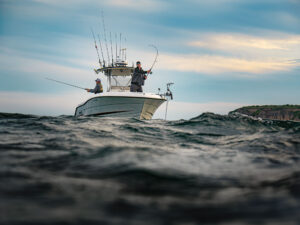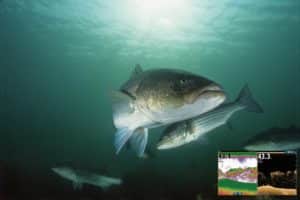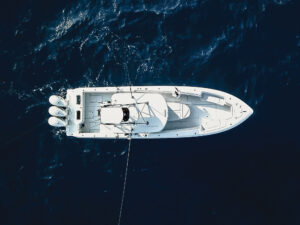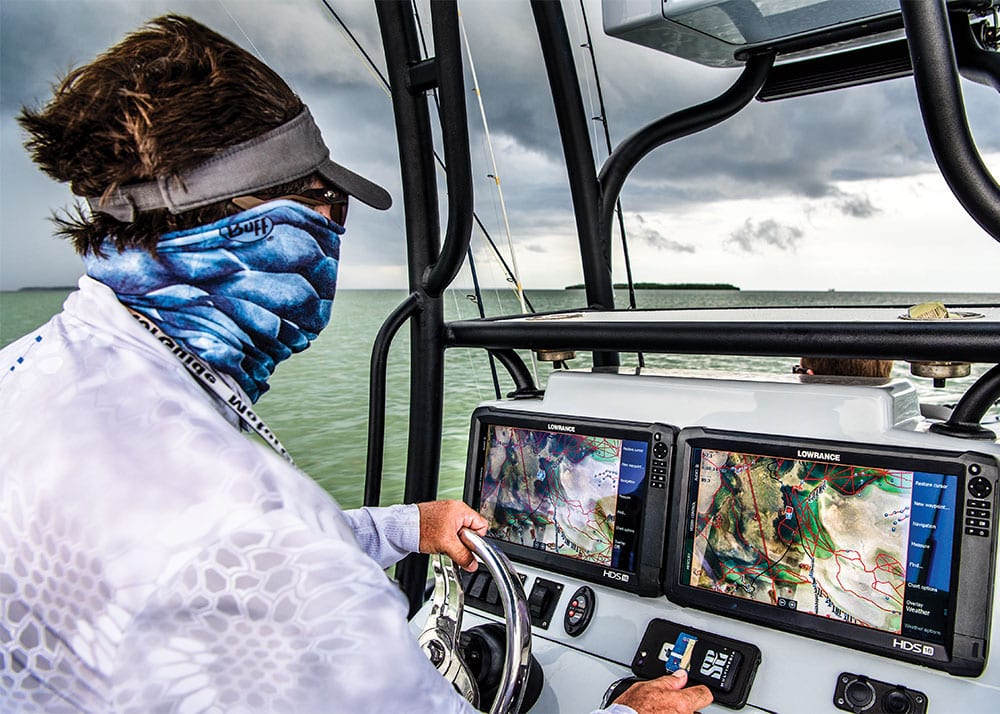
Outfitting your new fiberglass love with electronic gear means making some decisions about how you’ll use your boat, where and how you’ll mount the equipment, and what you’re willing to spend.
The top of your list should feature a chart-plotter/fish-finder combo — called a multifunction display or MFD — paired with a transducer, a VHF marine radio, and safety gear such as emergency beacons and/or satellite messaging devices. After that come audio preferences and peripheral electronics such as radar, autopilot, and additional sonar modules.
Throughout our survey, respondents commented about the benefits of current electronic technologies, and often listed those devices as their favorite onboard features. Under disappointments, many said that their dated electronics were in need of upgrading. Marine electronics, like consumer devices, continually evolve. The primary rule of thumb for any new boat owner is: Buy the best you can afford. However, you should realistically assume you’ll need to upgrade your system every three to five years. And if there’s an extended warranty available, buy it. It’s a rough world in an open boat.
Plotter/Sonar/VHF
At one time, anglers shopped a variety of brands and picked stand-alone units without thought to networking. Today’s electronics communicate, so it’s advisable to pick one brand and buy within that framework.
Fortunately, six major brands — Raymarine, Garmin, Simrad, Lowrance, Furuno and Humminbird — feature everything you might want on a fish boat. All offer a wide variety of multifunction displays. Choose one that comes with internal GPS, a chart plotter (plan to purchase an aftermarket chart card from Navionics or C-Map) and a fish finder.
The fish finder needs a transducer, which mounts on the transom, inside the hull or through the hull. Many MFDs come with a transducer standard, and often that’s a skimmer or transom-mounted version. But that’s not always the best choice for every style of boat, nor can it be used for all kinds of sonar.
For instance, according to Garmin’s transducer-selection guide, transom-mount transducers don’t work well on inboard boats or stepped hulls. In-hull versions lose some portion of their signal transmitting through the fiberglass, and through-hulls on deep-V boats often must employ large fairing blocks so the beam will transmit vertically.
Often anglers prefer to run two MFDs at the helm so they can monitor everything from sonar, radar and charts to cameras, audio and gauges (most electronics can now network with engine-control modules to provide data). Smaller-boat owners with compact helms might choose a single MFD, but perhaps one that’s large enough — at 12 or 16 inches — to fill the entire space. They can equip a second station with a smaller MFD that easily networks with the helm.
Many of today’s display screens employ in-plane switching, which makes the picture visible from all angles, even through polarized sunglasses. And of course, touchscreen- and keypad-display options give boaters a choice of how they control their electronics.
The type of sonar an angler chooses varies based on the type of fishing he or she does. Chirp sonar, which emits modulated pulses across a spectrum of frequencies for better target separation, has become a standard, and is vitally important for structure and bottomfishermen. However, even traditional 50/20 kHz technology has vastly improved with today’s better digital-signal processing.
Imaging sonar, which shoots a thin beam to both sides of the boat — or down, for photolike returns — helps anglers who seek structure or bait. Major electronics makers keep refining those beams and the algorithms that interpret them to create ever-more-detailed views of the bottom.
Some companies now offer 3D and real-time sonar options. If you’re interested in that technology now or if you think you will be in the future, purchase a compatible MFD, and you can add the appropriate transducer at a later date.
With regard to maritime VHFs, all now must come with DSC, or digital selective calling. DSC is a kind of paging system that also can transmit your position and vessel information to emergency personnel.
For purposes of selection, fixed-mount 25-watt radios can transmit up to 20 miles, though that’s dependent upon antenna height. A 5-watt handheld VHF can transmit up to 8 miles.
Cellphones do not substitute for VHF radios. Cellphone range is sporadic, and you can’t directly connect to the maritime rescue system.
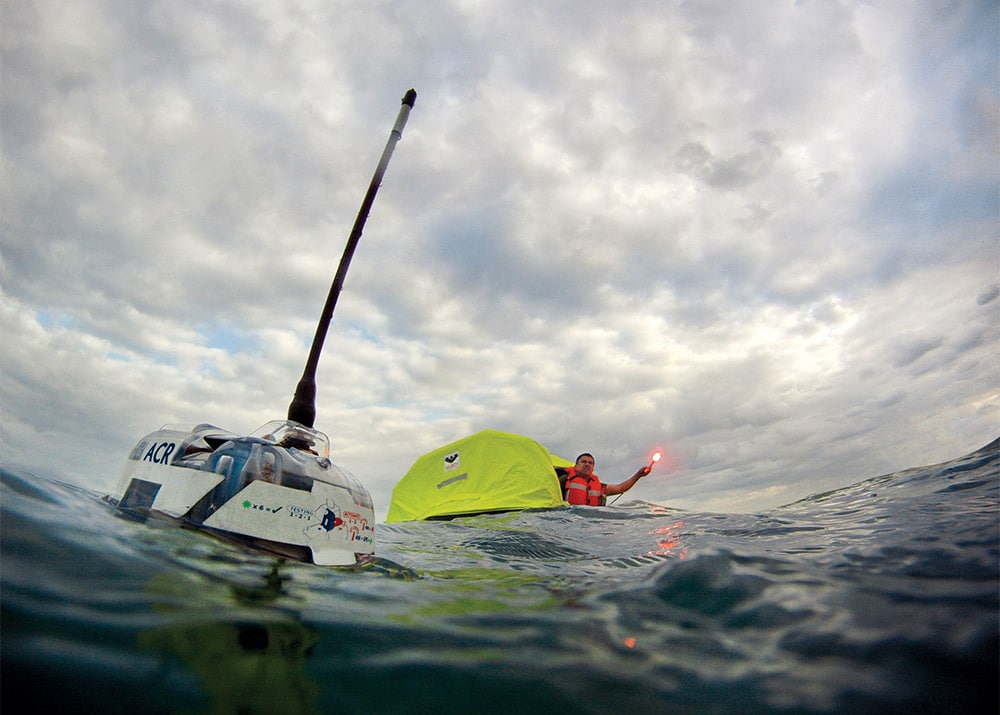
Electronic Safety
Speaking of safety, you’ll want to equip your vessel and/or yourself with lifesaving electronics. The most popular options include an emergency position-indicating radio beacon (EPIRB), a personal locator beacon (PLB), and a satellite emergency-notification device (SEND). Carrying a satellite phone can be an extra measure of safety, but it does not always provide a signal, nor does it communicate automatically with key rescue personnel.
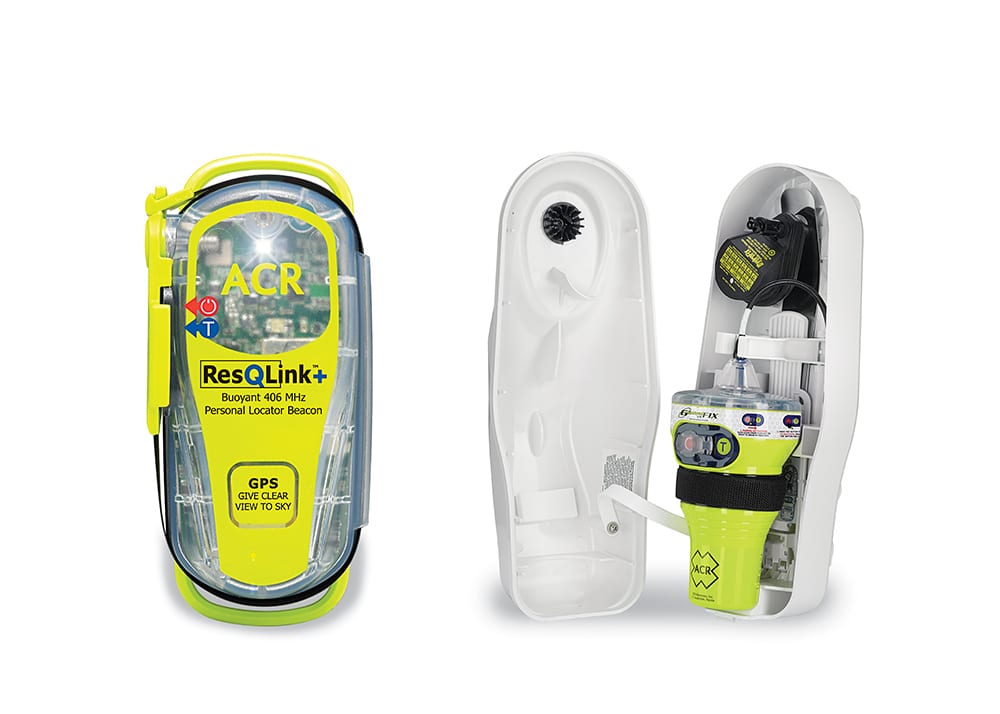
In general, an EPIRB is for a vessel, a PLB is for a person, and it should be worn on a belt or a lanyard. An EPIRB can be mounted to the outside of a console within easy reach. Both must be registered with the National Oceanic and Atmospheric Administration. When activated, both transmit emergency signals.
SEND devices, such as Globalstar’s SPOT and Garmin’s inReach units, provide a wide variety of services from social-media posting to location tracking and text messaging, as well as SOS emergency services through private organizations. Both require a monthly or an annual subscription.
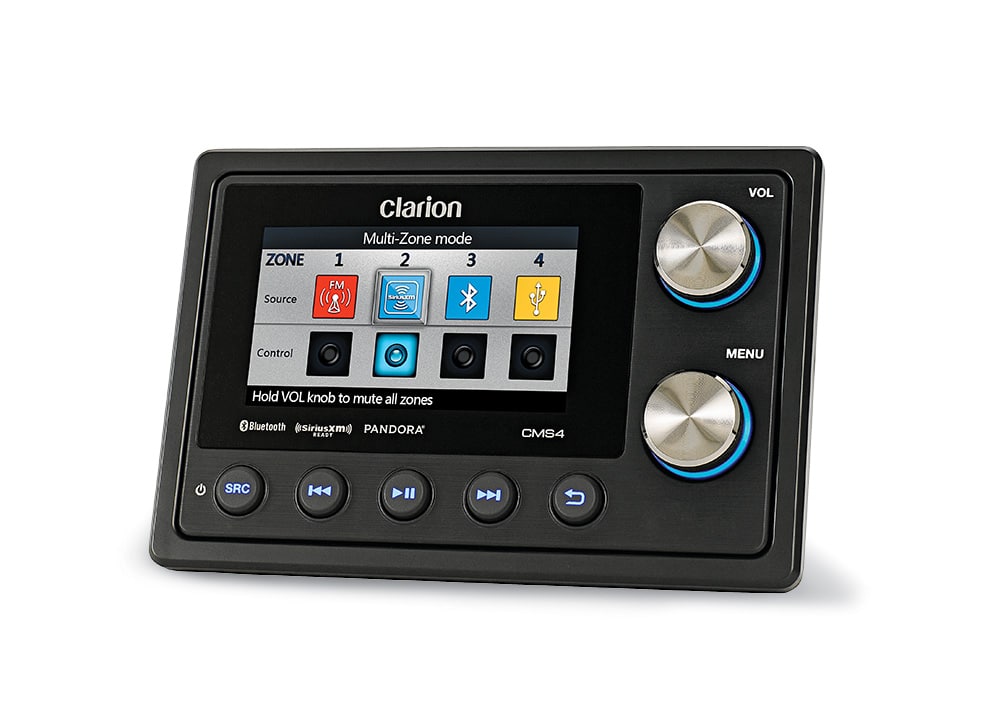
Audio on Board
An audio system can be a tricky product for anglers: Some would never leave home without their favorite playlists; others opt for the sounds of the ocean environment. But even those who prefer relative peace like to have options when family members and kids come aboard.
Marine audio has come a long way in recent years, following the habits of general consumers demanding Bluetooth streaming and systems integration.
The focus of audio’s future will concentrate on streaming different sources of music from smartphones, says Chris Baird, managing director of Fusion Entertainment. Today, that market is dominated by companies such as Spotify and Apple Music, with others such as Pandora and Tribal. “The quality of music will improve, and as such, so will the stereos and speakers need to improve to play this higher-definition music,” Baird says.
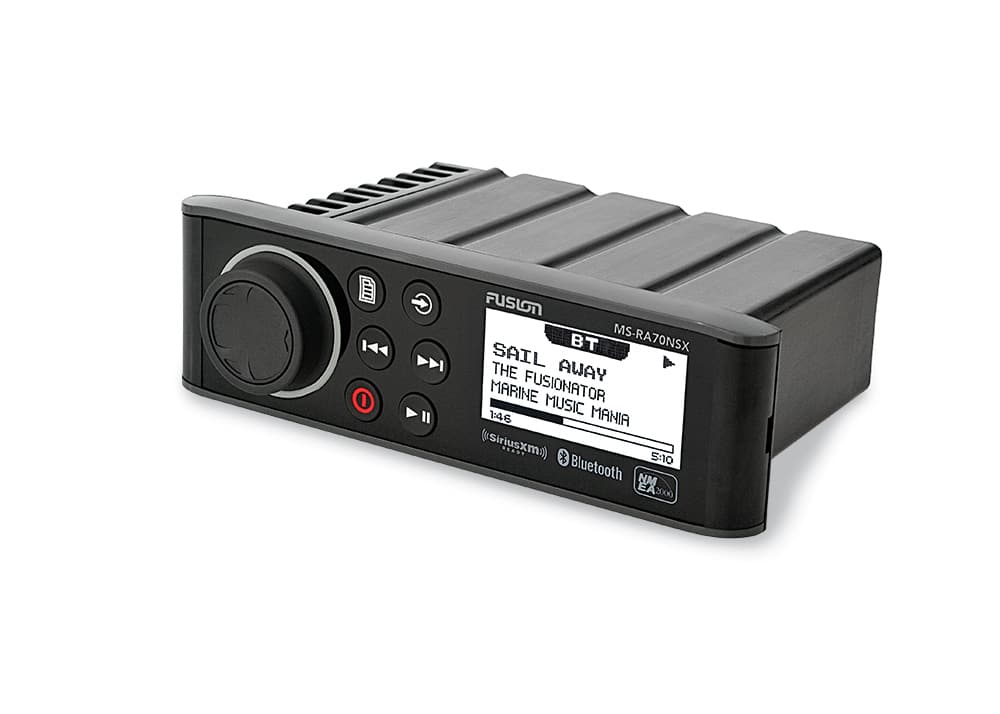
Currently, Fusion’s most popular stereo for the fishing market is its RA-70NSX, which Baird describes as an affordable yet bulletproof stereo that offers AM/FM radio, USB connectivity, Bluetooth streaming and SiriusXM capabilities. “The RA-70NSX also has Fusion-Link, which allows it to plug into most marine electronics chart-plotter/fish-finder units for control of your stereo. Importantly, it is simple to use and can fit into what is a standard DIN radio cutout, if you’re replacing an older stereo,” he says.
Popular speakers for fishing boats include the new EL series, 6½-inch shallow-mount systems, Baird says, adding that they’re also affordable.
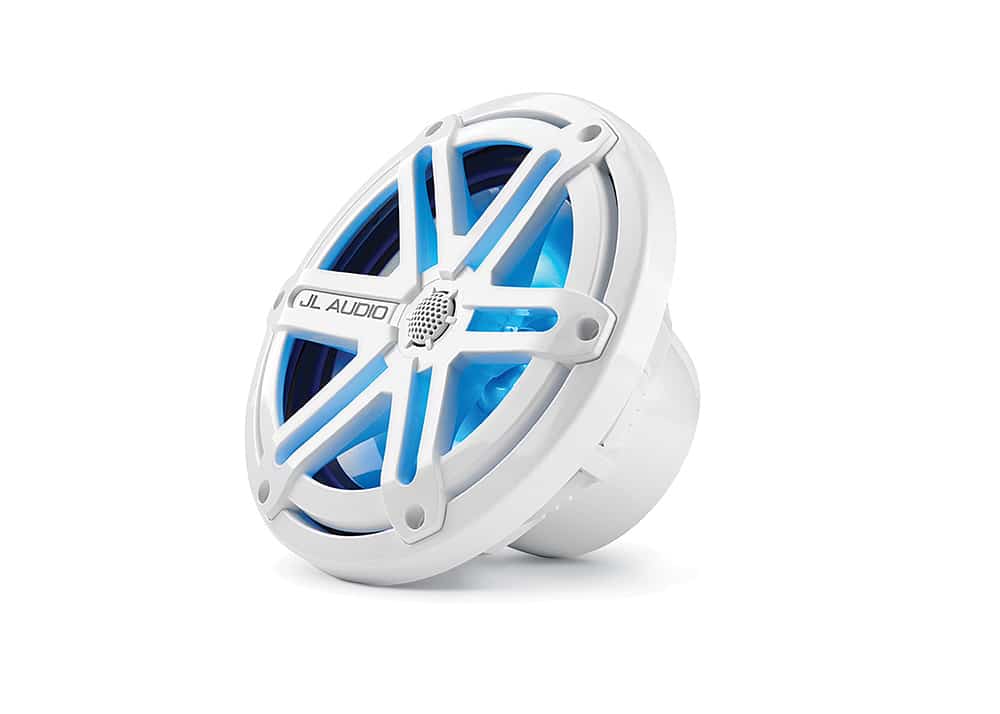
Two other popular companies in the marine-audio market — JL Audio and Clarion, which entered into a licensing agreement in late summer 2018 — offer anglers many choices for listening to their own tunes or for streaming. For JL, the most popular system starts with the MediaMaster 50, a marine digital-media receiver with Bluetooth. That head unit pairs with JL’s MX Speakers, available in 6.5- and 7.7-inch sizes, accompanied by a 10-inch subwoofer.
Clarion buyers prefer the M508 system or a CMS4 display with a belowdecks black-box module and CM-Series speakers. The CMS4 acts like a source unit and multimedia hub in one.
Never Fear
While these electronics choices might make your mind swim, know that help is always available through our online Marine Electronics Guide, through retail dealers, manufacturers and their websites, and obviously through dock mates who have some experience with different gear.
Electronics makers also take great pains to simplify their products, making them mimic the smartphones and tablets you currently use.
There is no question that today’s electronics will improve your fishing, and enhance every day you spend on the water.


